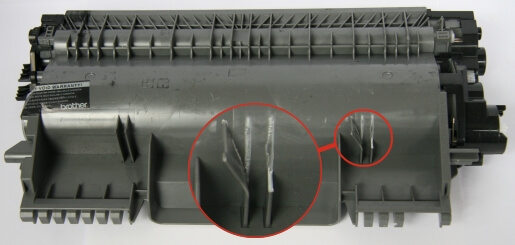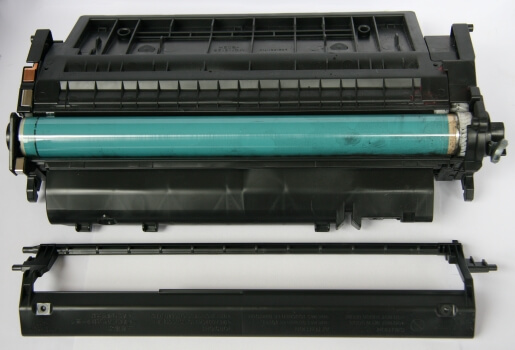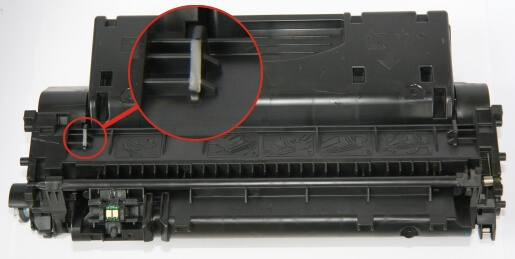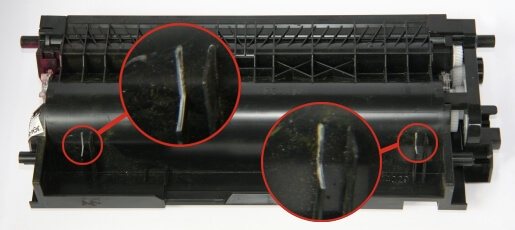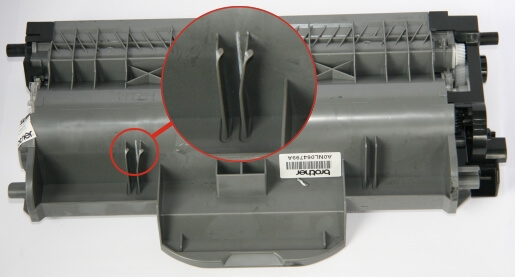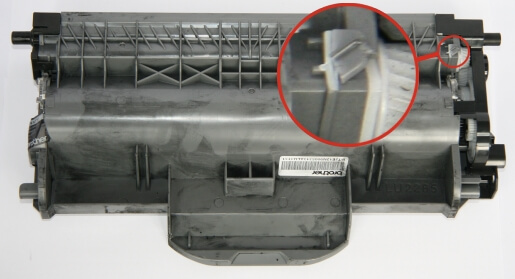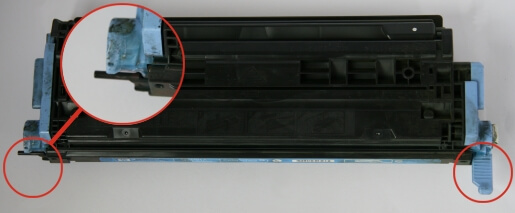Fully functional and undamaged printer cartridges are required for recycling
Please avoid damage during handling and transport!
Empty printer cartridges are often damaged due to careless handling or improper packaging (during transport). You can help ensure that your empty toner and ink cartridges arrive undamaged:


General handling instructions
Always remove the toner cartridge or ink cartridge from the printer with care. The visible contact plates and nozzle plates on ink cartridges, as well as the OPC/photoconductor drums on toner cartridges, are highly sensitive components. Please avoid damage and scratches.
When transporting toner cartridges, use the PE film (airbag) and the original protective clip/transport lock whenever possible. This will help prevent damage to the OPC/photoconductor drum and rubber rollers.
Please pack toner cartridges and ink cartridges separately and securely for transport. Use sufficient filling material, such as newspaper, to prevent the individual cartridges from knocking against each other or lying loose in the package. Pack the packages firmly without any gaps. For more information on proper packaging, see Packing correctly.
Never protect the visible contact boards and nozzle plates on ink cartridges with adhesive tape or sticky tape. After removing the adhesive tape, residues of the adhesive film remain stuck in the nozzles, rendering the cartridge unusable.
Do not store empty ink cartridges for too long. Residual ink dries in the nozzles and can clog the hair-thin lines. The ink foam can also harden and may no longer absorb ink. If possible, do not store empty ink cartridges above 20° Celsius.
Important notes on ink cartridges
All incoming ink cartridges are thoroughly tested upon receipt for:
- Original or recycled condition
- Damaged or broken (cartridge) casings
- Integrity of electrical components and nozzle plates
- Missing or damaged print heads
- Unsuccessful or faulty electronics test of the cartridges
- Missing or damaged original labels
- Labelling of the cartridges, e.g. with a permanent marker or paint pen
Unfortunately worthless! Examples of defective or unusable ink cartridges:
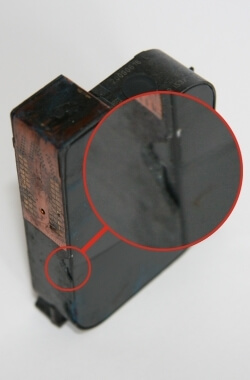
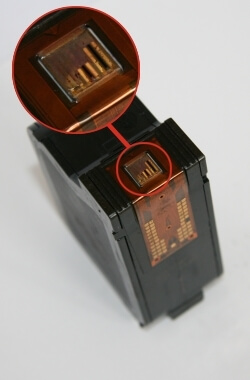
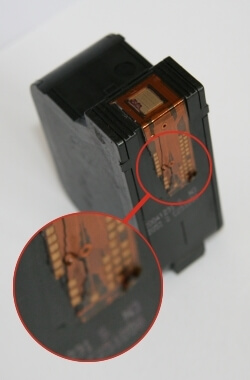
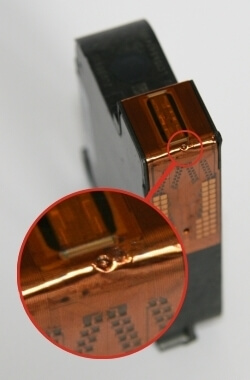
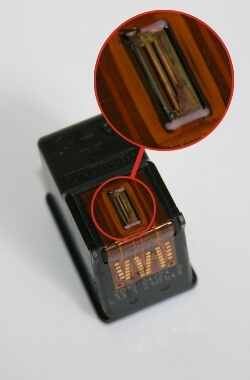
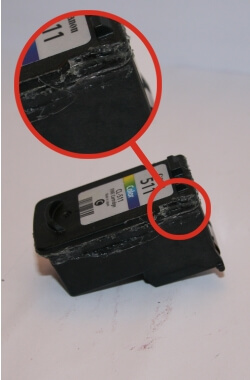
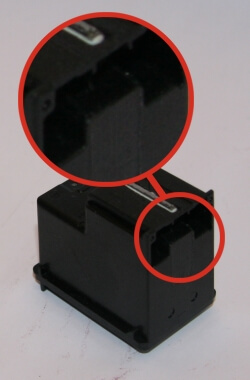

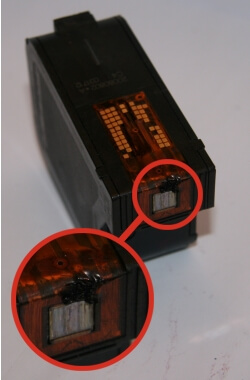

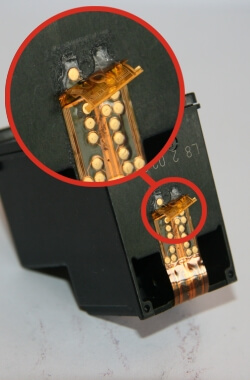
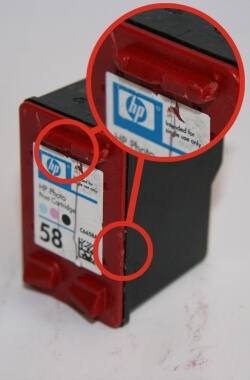
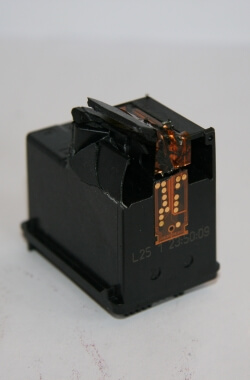
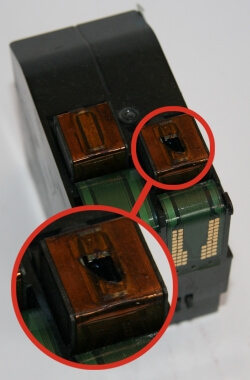
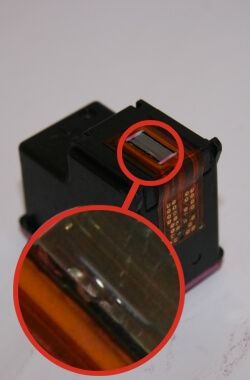
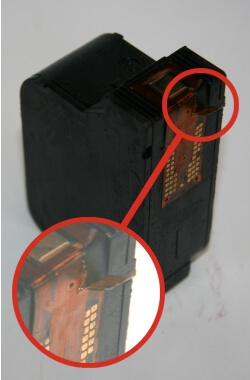
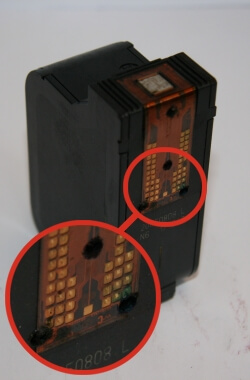
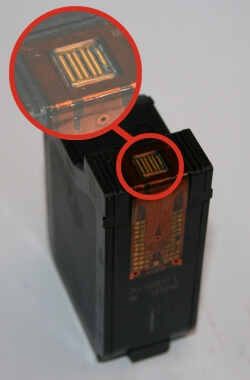
Normal wear and tear on ink cartridges:
Of course, ink cartridges in particular are subject to normal wear and tear when in use, i.e. in the printer. For example, the movement of the carriage in the printer and the resulting vibrations scratch the contact plates on the cartridge. This can cause the cartridge to have an electronic defect in another printer, but it will still print in your printer because the scratches on the board ‘match’ the contact pins in the printer.
Another problem is the wear and tear of heating elements in the cartridge. In many printers, the ink is applied to the paper by an expanding air bubble. This ‘bubble jet process’ requires small heating elements in the cartridge that bring tiny amounts of ink to a ‘boil’, thereby creating the necessary rapidly expanding air bubble. These microscopic heating elements in the cartridge require constant contact with ink for cooling. If there is no ink on the heating element, for example because the cartridge is empty, these heating elements can burn out. Such an ink cartridge will never print correctly again and is therefore no longer suitable for remanufacturing. As a user, you can neither prevent nor influence such wear and tear on ink cartridges.
Electronics testing for ink cartridges:
During electronics testing, the electrical conductor is checked for continuity from the control contact to the heating element. Special testing devices are used to detect damage to the cartridge and issue a corresponding error message.
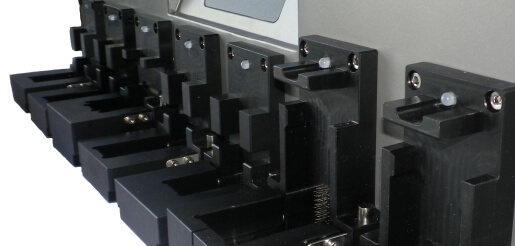
Important notes on toner cartridges
All incoming toner cartridges are thoroughly tested upon receipt for:
- Original or recycled condition
- Damaged or broken casings
- Damaged drums or photoconductor rollers
- Integrity of chips and electrical components
- Missing or damaged original labels
- Markings on the cartridges, e.g. with a permanent marker or paint pen
Unfortunately worthless! Examples of defective or unusable toner cartridges:
